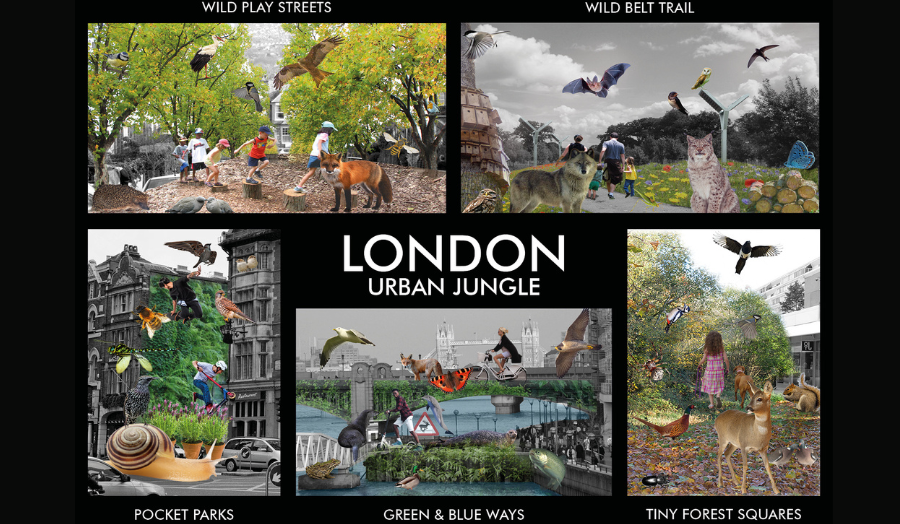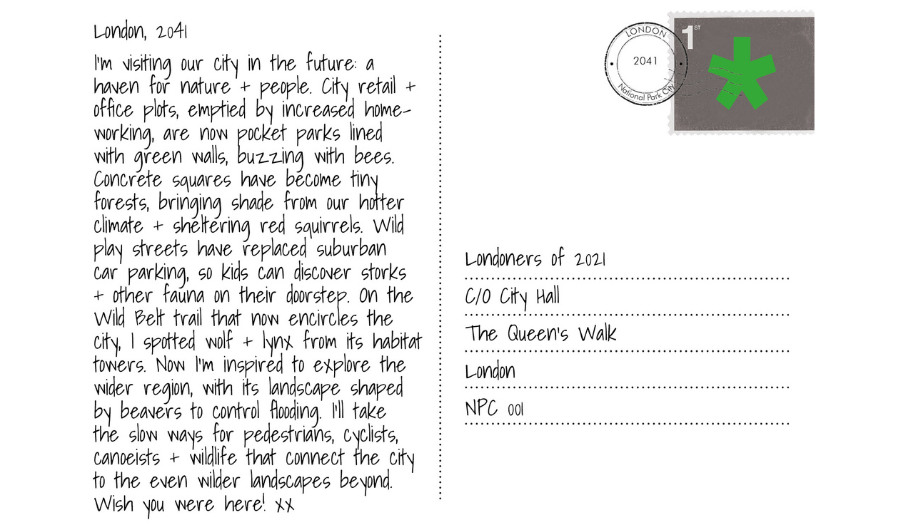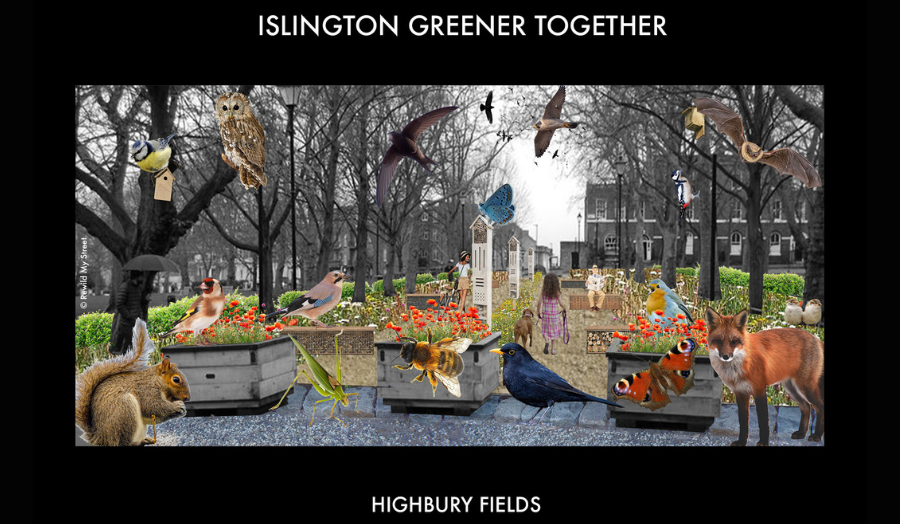London: Urban Jungle combines design research with storytelling and emerged from the award-winning Rewild My Street urban-rewilding campaign and an MIT Post-COVID-19 City Direct-Action Fellowship. It uses digital collage and narrative to create postcards that imagine a future rewilded London.
The main postcard depicts five key public spaces transformed by rewilding: inner-city ‘Pocket Parks’ and ‘Tiny Forest Squares’, residential ‘Wild Play Streets’, an encircling ‘Wild Belt’ and connecting ‘Green and Blue Ways’. The back of the postcard has a message written from the perspective of a time-traveling Londoner, who is impressed with the progress made with rewilding on visiting the capital two decades into the future.
A second postcard features maps showing how the rewilded spaces form a habitat network at both local and regional scale. Separate postcards have also been created of each of the five key spaces, with a message describing the experience in detail.
The technique has been applied to visualise concepts for live projects through London Met Lab’s ‘Environment Challenge’, including Highbury Fields in London, a pilot rewilding project for Islington Council. It is being adapted for other cities, with postcards describing a future, rewilded city of Molenbeek written as a provocation for a citizens’ assembly for Brussels European Capital of Culture 2030.
The postcards are published in a book chapter in ‘Beauty and Monstrosity in Art and Culture’, a case study on ‘Rewilding Islington’ for the National Centre for Academic and Cultural Engagement and Rewild My Street’s Inspiration webpage.

Image: London: Urban Jungle front of the postcard from Rewild My Street project run by Siân Moxon depicting five key public spaces transformed by rewilding.


